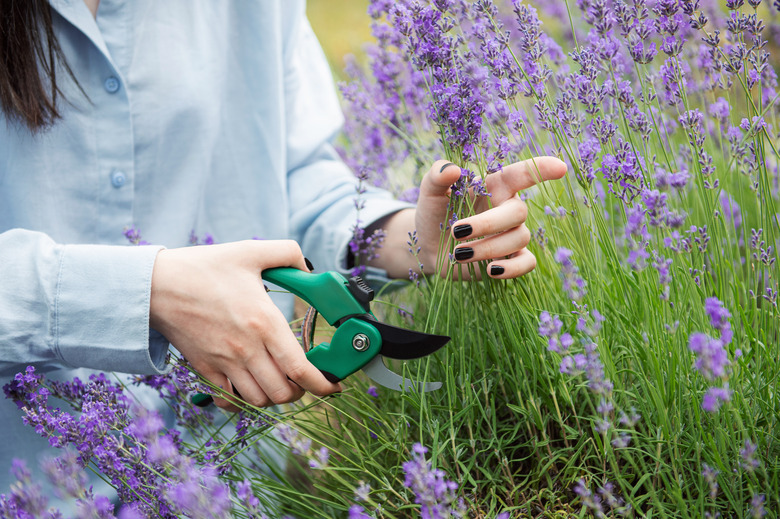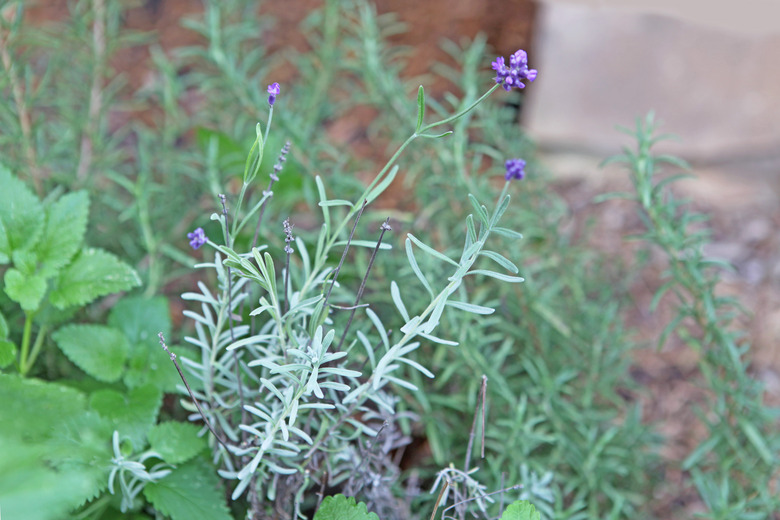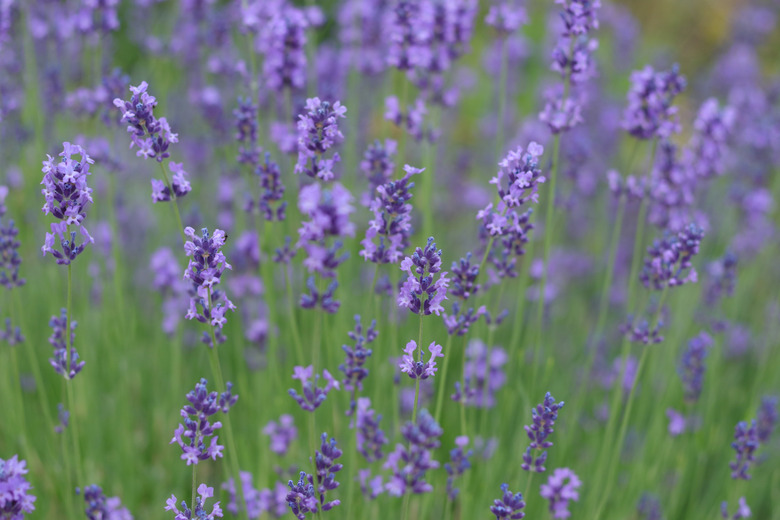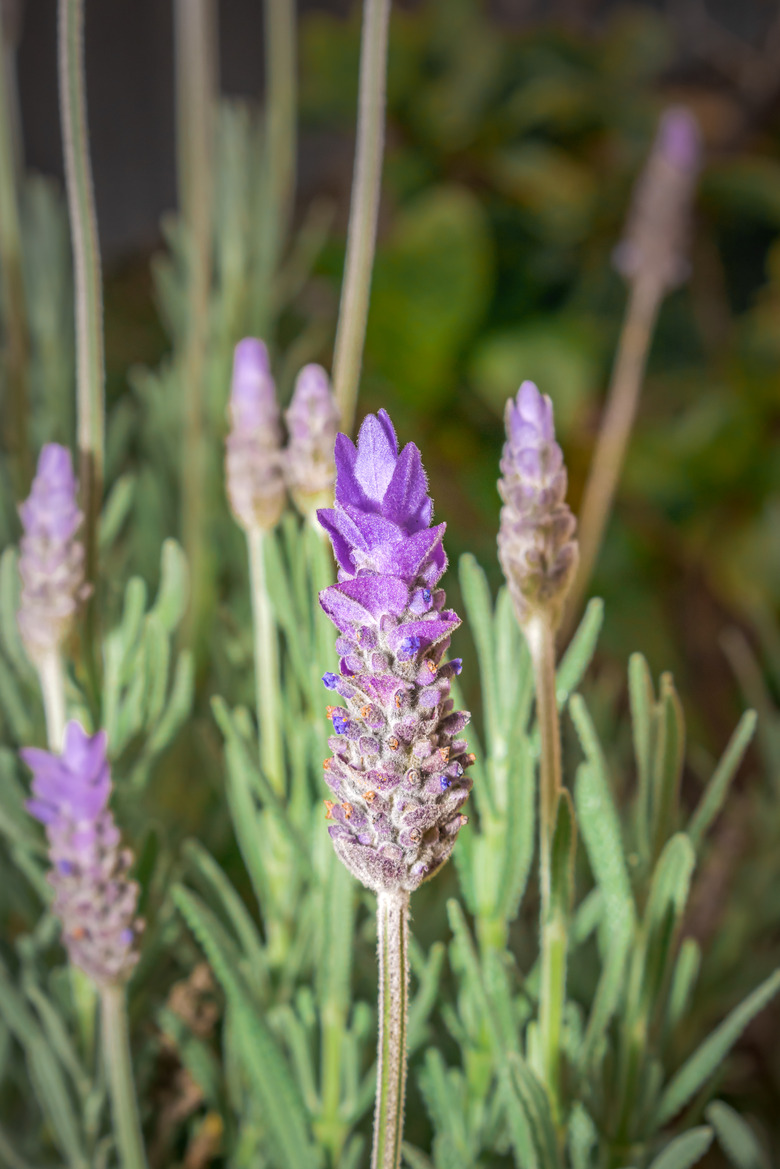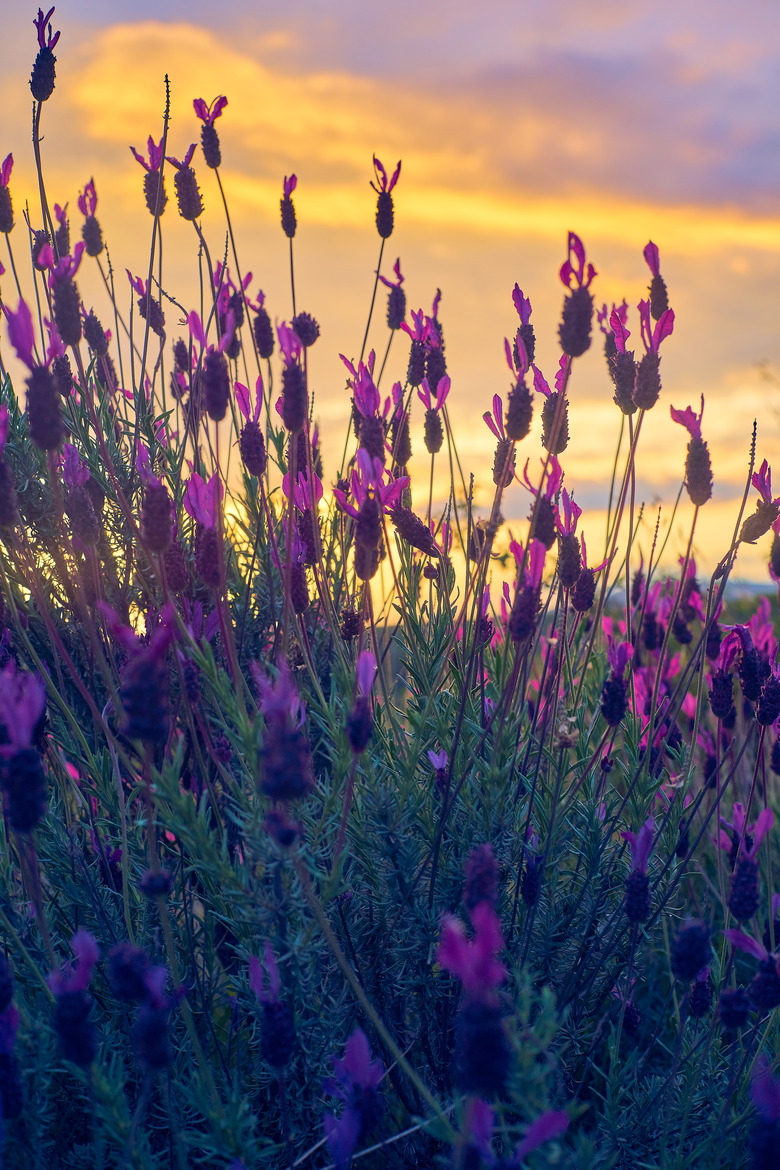How To Prune Lavender
We may receive a commission on purchases made from links.
Lavender (Lavandula spp.) refers to any of numerous species of perennial shrubs in the genus Lavandula. With attractive blue-green or gray leaves that smell like balsam and long spikes of fragrant lavender-purple flowers, lavender bushes are cultured as ornamental garden plants. Some are grown for their essential oil. Three of the most common types of lavender are:
- English lavender (Lavandula angustifolia), the classic that is relatively compact and has deep purple flowers
- English hybrid lavender, also called lavandin (Lavandula x intermedia), a larger plant with numerous flower spikes and highly fragrant flowers
- Spanish lavender (Lavandula stoechas), with upright petals at the top of the flower heads, giving the blooms a
rabbitlike appearance
Lavender shrub species grow in U.S. Department of Agriculture plant hardiness zones 5 through 10, depending on species, and they do not need much maintenance to thrive in a site with full sun and well-draining soil. Regular pruning, however, is required. If you don't prune your shrubs, they will become woody, leggy, and unattractive, requiring replacement after a few years. The older woody stems stop producing new shoots over time, detracting from the plant's appearance. When you prune annually, the lavender will remain compact, and you'll get more of those fragrant flowers.
Here's how to prune lavender or when to prune lavender of all the most popular types.
How to Prune New Lavender Plants
How to Prune New Lavender Plants
The pruning of lavender plants is required for all species and cultivars, and this should start when the plants are young. Remember that the idea of annual or biannual pruning for lavender plants is to prevent the plants from becoming woody since the woody sections of the stems will ultimately stop producing foliage and make the plant unattractive.
Pruning young plants doesn't require pruning shears. They only require a light trim the first year. Use your fingers to pinch off the tips of new growth in summer, or snip them with scissors just after the first wave of flowers. This causes the young plant to form dense branching that means lots of blooms to come as the plant matures. Waiting to prune will cause the plant to form woody growth that can't be shaped as nicely.
How to Prune English Lavender
How to Prune English Lavender
English lavender is the most popular and the hardiest common species of lavender. An excellent compact specimen plant, the shrub usually stays around 2 to 3 feet tall and wide if properly pruned. Some popular cultivars include:
- Lavandula angustifolia 'Hidcote,' which has deep purple flowers
- Lavandula angustifolia 'Munstead,' which has lavender-blue flowers
- Lavandula angustifolia 'Twickel Purple,' which has long royal purple flower spikes with a heavy fragrance
English lavenders grow in USDA zones 5 to 8 and offer their beautiful, highly fragrant flowers for around three to four weeks in early summer. These flowers bloom on new growth, so it is important to avoid major pruning in late spring or early summer since you'll be taking out the flower buds.
Instead, trim back the established shrubs by about two-thirds after they finish flowering and the blossoms lose their color. Prune with a hand pruner or sharp secateurs. While deadheading is useful, given the small size of each blossom, it makes more sense to simply scissor off the tops of the plants. When these flowers fade, cut off the flower spike at the base where the flower stalk meets the body of the plant. This will promote vigorous, healthy growth and keep the plants in good shape. Do not cut close to the woody base of the stems or the plant might struggle to overwinter.
In springtime, just after the risk of frost has passed, it is time for another hard pruning to take out woody stems and encourage new growth. Follow these steps:
- Cut out all dead, frost-damaged, or diseased branches.
- Prune back stems to about 2 to 3 inches above their woody base, which is just below the leafy section. Generally, this will leave only a few sets of leaves. This should take out about two-thirds of the plant.
- Do not cut the stems too far down into the old wood since new leaves will not grow.
Inspect the plant carefully and look for tiny blue-gray shoots that look like little dots low on the stem. As long as you cut above those dots, the shrub will be fine. - Gather handfuls of stems and prune them together. If the plant is in a hedge, use shears instead of pruners.
- Follow the broadly mounded natural shape of the shrubs by pruning the outer stems a little shorter than the inner stems.
How to Prune English Hybrid Lavender
How to Prune English Hybrid Lavender
Lavandula x intermedia is a hybrid cross between English lavender and Portuguese lavender. These lavenders will grow larger than English lavender shrubs, with branched stems that are longer than those of English lavender. The flower spikes are long and graceful. They generally flower from July to September and should be pruned immediately after the flowers fade in fall.
The steps to follow when pruning are:
-
Cut out all dead, frost-damaged, or diseased branches.
-
Prune the long, flowering stems of this shrub after the final bloom.
-
Cut back by about one-half the height of the plant.
-
Take care not to prune the stems back into the woody part of the plant. Instead, use a pruner to reduce the height of the plant by about half.
-
Leave plenty of foliage but shape it into a rounded mound of foliage.
How to Prune French or Spanish Lavender
How to Prune French or Spanish Lavender
Spanish lavender (Lavandula stoechas) is sometimes called French lavender (although this common name denotes another species) or butterfly lavender. The shrub is aptly described as "tufted" lavender, with upright petals at the top of the flower heads and full, thick flower spikes. They are much less hardy than English lavender, thriving in USDA zones 8 and 9, although some selections are hardy to zone 7. They flower in late spring in warm zones, their early blooms followed by a second flush that flowers into autumn.
They should be pruned twice, once after each bloom. Trim back the plants by one-third after the first flush of flowers has faded, and then repeat this after the final flowers fade, shaping the plant into a mounded form. Deadhead the faded blooms throughout the growing season, removing faded flowers by cutting off each flower spike at the base where the flower stalk meets the body of the plant.
